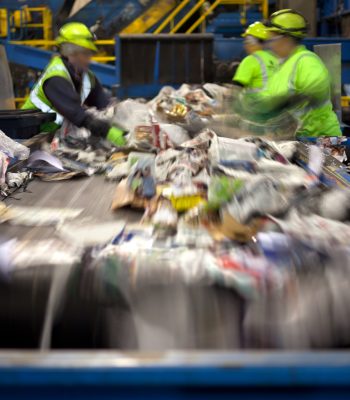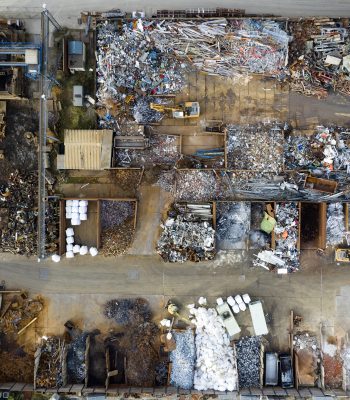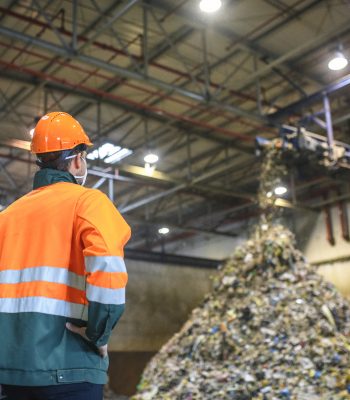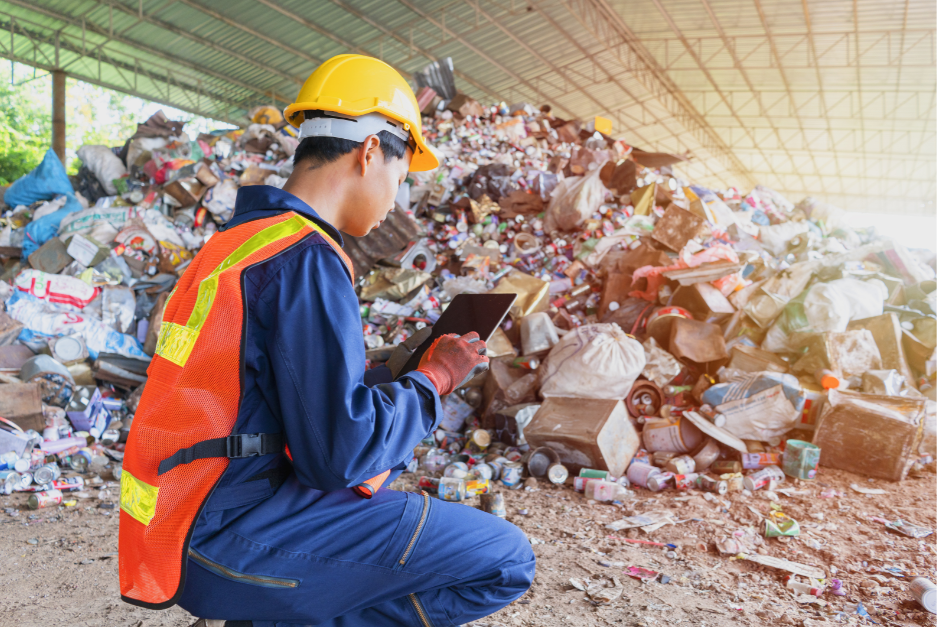Description
The world generates 2.01 billion tonnes of municipal solid waste annually, with at least 33 percent of the whole not managed in an environmentally safe manner. Looking forward, annual global waste production is believed to reach 3.40 billion tonnes by 2050.[1]
The increasing quantity and complexity of waste requires digital innovations that improve our ability to manage solid waste. Introducing digital components in the Solid Waste Management Process (SWMP) results particularly beneficial for the improved assessment and planning of collection and transportation phases.
A first step towards digitalisation consists of a manual data collection and planning process aimed at optimising collection routes and schedules. This can be organised on a static spreadsheet style for assessment and planning of the garbage truck collection routes. Manual data work here refers to the collection and recording of vehicle routes and vehicle ‘filling rates’ combined with fuel and labour efficiency assessments and planning.
Beyond the process of optimising the planned and scheduled collection routes in a static way, a more dynamic approach can be introduced through the use of sensors in containers, bins or other collection points in combination with an adaptive route planning or scheduling approach.
Policy makers must ensure that this advanced and digitalised approach is linked to GPS based vehicle observations as well as digital analysis and planning processes for optimal service efficiency.
By gathering real-time data on the fill levels of bins, smart waste sensors enable waste management professionals to remotely monitor how full or empty bins are. This means that garbage collectors no longer have to check and service all bins on their collection routes. Instead, they can skip half-empty bins and focus their efforts solely on the containers in need of service.[2] The introduction of this digital innovation empowers a transition from static to dynamic waste collection routes, as routes change depending on how frequently bins are used. Such sensors are easy to place in your waste containers and to set up via a simple installation app on your smartphone as illustrated in the picture to the left.[3]
Digital solutions can also play an important role in the pre-collection phase of the waste management hierarchy by encouraging buy-in and participation from citizens to self-manage waste more effectively. This includes waste sorting at source, to facilitate more recycling and value-extraction from waste, efforts to reduce waste generation and efforts to increase the reuse of products and materials.
Ensuring sufficient or optimal buy-in among citizens is key to the effectiveness of solid waste management services and can be greatly improved with the introduction of digital tools. Communication and information campaigns, attitude campaigns or stakeholder consultations can be supported by (i) Digital/smart data collection (e.g. By cameras), (ii) Digital/automated communication and messaging between the city and operators as well as (iii) Digital/automated communication and messaging between the city, operators and end-users.
Additionally, cities can go beyond these low-cost solutions and implement high-cost digital innovations that also result in an improved waste management. Policy makers should promote a wider adoption of these technologies across municipalities when the necessary foundational structure, data collection points and operating systems are in place.
As an example, before deploying sensor-based technology across a whole fleet of garbage trucks, the municipality in charge should ensure that the correct GPS Software or OS system necessary for the efficient functioning of the new technology is in place.
Among these more expensive solutions, Industrial Internet of things (IioT) can help introduce sensor-supported containers that collect data on the waste. These containers then transfer the data to central units and provide insight on identification, weight, temperature and software to optimize logistics particularly for route optimisation and fleet management.
Cloud computing can store and process sensor data received from the containers and provide cloud based software solutions to optimize workflows. Data Analytics identifies patterns, extracts information and helps discover trends or calibrate models. Using these software technologies, workflows are optimised particularly in the collection and transport phase.
Using these innovative software and the associated hardware sensors needed, one can document failure to collect, failure in sorting waste or apply it to detect waste bins. This will in turn help in the connection, standardizing and optimizing of general procedures as well as provide real-time order management and route planning and optimization using GPS data.
Additionally, Robotics is a form of hardware that plays and important role in the sorting phase. At the same time, Artificial intelligence is a software technology that has a key role in the sorting and collection phases. This can take shape in the form of autonomous, self-driving street sweepers or automatic sorting/recycling plants.
In recent years, new technologies such as Industrial internet of things (IioT), Supply chain management and intelligent automation have helped reduce the use of materials in the manufacturing process, while others have contributed to giving products longer lifespans – hence, alleviating overall waste production.[4] On the other hand, news ways of doing business such as E-Commerce have had profound impacts on waste streams generated in the distribution process. According to research by the University of Bamberg, Germany destroys 20M items annually (4% of returned goods) as a high number of returned deliveries are eliminated instead of resold.[5]
Policymakers seeking to introduce digital components in the SWMP should therefore consider how digital technologies can change the ways goods are produced and consumed, and in turn, how waste is generated.

Resource Implications and Key Requirements
The introduction of cleaner technologies and waste recovery and recycling systems often involves a few challenges and requirements, especially arduous for countries in the early stages of transition to open-market economies. Existing literature on the topic identifies a number of key requirements essential to implement digital components in support of an environmentally and financially sustainable system for managing solid waste
1. Infrastructure and Technological Maturity
The readiness of the infrastructure involved in the SWMP is critical for an effective waste management, which heavily relies on the accuracy and availability of data. Both Hardware and Software technologies require more advanced digital components to enhance the different phases of the solid waste management process. Adequate maintenance of hardware devices such as sensors and identification systems assures data reliability; important for example in automated sorting plants and smart waste bins that work with detection and notification systems.
The importance of Software improvement and maintenance should also be highlighted. The accuracy of real-time waste collection information is heavily influenced by the algorithms employed in all of the electronically supported platforms involved in the different steps of solid waste management. Above all, it is important that the foundational structure needed for the adequate performance of these digital tools is in place before investment takes place to make sure the city can reap the benefits of digitalisation. Some examples of foundational structure include bins, waste collection fleets, treatment facilities etc..
2. Lack of Skilled Workforce
Cities deciding to implement new digital technologies in their SWMP should ensure having enough qualified staff to operate the waste management system by strengthening digital literacy and targeted digital skills among employees (either potential or existing). If a digital tool is introduced but no one has the required skills and expertise to operate such a technology then it would represent an extra burden and a failed investment failing to achieve the intended objective. Municipalities should therefore train staff in the use of new systems and assure staff have the relevant legal and technical knowledge and capacity to review the performance of the systems.
3. Funding and Financial Support
It is crucial to understand that the digitalisation of the SWMP is a long-term investment. The city needs to provide financial support to ensure funds to support research and development are in place. In addition, cities ought to allocate financial and human resources for the upkeep of waste management equipment, such as battery replacement for sensors, equipment replacement, system maintenance, etc.
An improvement in these aforementioned digital components of the SWMP can help reduce waste and allow for the creation of new income sources for the community. Awareness campaigns or taxes for non-complying households can achieve similar objectives with the support of digital components but without the need to implement a wide financial infrastructure.
For example, Data analytics and Cloud computing can help gather more accurate data on non-complying individuals who disrespect municipal laws on solid waste and can help introduce a more accurate taxation system. Overall, Policy makers should aim at making substantial investments in digital components when these have the potential to drastically help the environment and work efficiently in the long-term. Otherwise, opting for more affordable measures can equally help improve the efficiency of the different steps of the solid waste management process.
It is also important to point out that the introduction of digital tools can enhance the efficiency of public sector waste management, allowing services to reach more locations and at higher frequency, as discussed in the next section. Digital tools can also create new opportunities for private sector participation and generate new sources of finance attracting foreign investment.

Potential Private Sector Participation
With digitalisation and new technologies, the complexity of the waste management sector has greatly evolved in the last decades. In turn, the interest from the private sector to participate has been rapidly growing. Small contractors are increasingly becoming large integrated companies acting together with municipalities in a Public Private Partnership (PPP).[6]
It is important to assess how private sector involvement may affect digitalisation, but at the same time, it is important to consider how we can use digitalisation to further involve the private sector in some of the different phases of the SWMP.
The disposal of household and commercial waste tends to fall under the public sector’s responsibility. However, private companies are involved in the performance of functions in one form or another through the entire value chain.[7]
Various models have been established with the aim of transferring functions in the waste disposal sector. Such models include contracting, concession, franchise and open competition.
In contracting, one or more functions may be tendered to private sector providers in a competitive process. In this contracting model, the public sector pays the private companies for the service performed, in a form of functional privatisation that gives rise to a service agreement across all parties. Typically, the private sector assumes the entire financial risk and in turn, this model results in the lowest waste collection cost.[8]
Another form of private sector participation can take the form of a franchise. Under a franchise model, the transfer of functions may vary from case to case. Typically, a disposal company is granted a local monopoly. The company then charges consumers for its services in its own right in order to cover its current expenses. In this case the private company may want the government to bear some of the financial risks and in practice it does not result in the lowest collection costs but may result in lower costs for residents in the municipality.[9] Some examples include waste collection or transportation to a landfill site.
The waste sector also operates under a concession model, usually involving large-scale investments. Under this model, the private company is authorised to charge fees to the producers of waste in order to finance its investments and current costs. Depending on whether prices that cover the company’s costs can be realistically imposed on the market, the public sector may contribute to the company’s funding in the form of subsidies. Some examples of concessional models in the waste sector include the construction of incinerators, waste treatment plants or composting plants. Under a concession model, the financial risk is assumed by the private owner, offering more flexibility in the establishment of a management structure and being less susceptible to political interference.[10]
The last model under which private firms can operate in the private sector is open competition. This can include free competition between several disposal companies. These companies are granted licenses by public authorities and offer their services in a competitive market environment. This form of PSP usually brings higher benefits to investors as highly competitive companies tend to develop faster technologies and do not depend on bureaucratic debates that can slow down innovation processes. They tend to have lower prices and benefit from an increased flexibility in terms of personnel acquisition.
Private sector involvement in the form of a PPP often results in a greater performance. Such is the case of Beirut where the entry of public-private partnerships for municipal solid waste management services lead to increased performance efficiency and environmental protection enhancement.[11] The study found that having private firms provide collection services under a contract with the local government resulted in the lowest collection cost.[12] It is the job of policy makers to establish performance monitoring and conduct cost-benefit analysis to assess the advantages and disadvantages of the various forms of PPP and ultimately find the least expensive and most effective solid waste management solution.
It is very important to point out that the digitalisation of the solid waste management creates new streams of data as new sensors and inputs across the different stages of the SWMP are put into place. This raises some privacy concerns when it comes to disseminating public data, a potential sensitive topic between public and private entities.
Having public data in private hands can pose a threat and public players must be cautious when deciding to tender out different stages of the solid waste management to private companies.
Besides the factors above mentioned, there are many other important ones to take into account in order to perform and in-depth analysis on how digitalisation affects private sector involvement. Such factors should include cost recovery, efficiency, public accountability, management, finance, economies of scale, legislation, institutions, and cost. Cost factors in particular should be assessed separately for each of the different stages of solid waste service – collection/transport, sorting/cleansing/recycling and disposal/transfer.

Implementation Obstacles and Possible solutions
We can expect well-connected operators providing suboptimal collections services to show some resistance to the introduction of digital components in the Solid Waste Management value chain. Additionally, objections to digitalisation may come from the part of residents and businesses and in general, groups that will see a higher collection fee in order to ensure the proper functioning of the new collection system.
This makes the operating and maintenance costs of waste treatment one of the key challenges impeding the growth of the municipal solid waste management market size. Strong political commitment, education, awareness campaigns and a wider spectrum of stakeholder engagement are necessary to improve the commitment and buy-in from various stakeholders and end-users.
Adding to this, a very important obstacle to the digitalisation of the solid waste management is the substandard training of employees. It is key that the staff have adequate training of the use of innovative technologies to make the most out of the investment and achieve an improvement in the efficiency of solid waste management.
Waste production is expected to increase more than 73% by the year 2050.[13] This emphasises the need for improving waste collection coverage as well as waste recovery and disposal practices. The introduction of digital tools is key to improve these practices and in turn, it can also help reduce environmental externalities and the detrimental health impacts on the public associated with inefficient solid waste management.

References
[1] World Bank. (2020) Trends in Solid Waste Management.
[2] Nordsense. (2022) How Smart Sensors Are Improving Working Conditions for Waste Collectors.
[4] Genpact. (2016) Transforming industrial businesses with the internet of things
[5] Fedorenko, Sasha. (2019) German serial-returners returned one in sixth purchases in 2018
[6] Webber, Barbara. (2010) Infrastructure as an Asset Class (p.138-141)
[7] Ibid
[9] Ibid
[10] Ibid
[12] Ibid
[13] World Bank. (2021) Bridging the Gap in Solid Waste Management.








